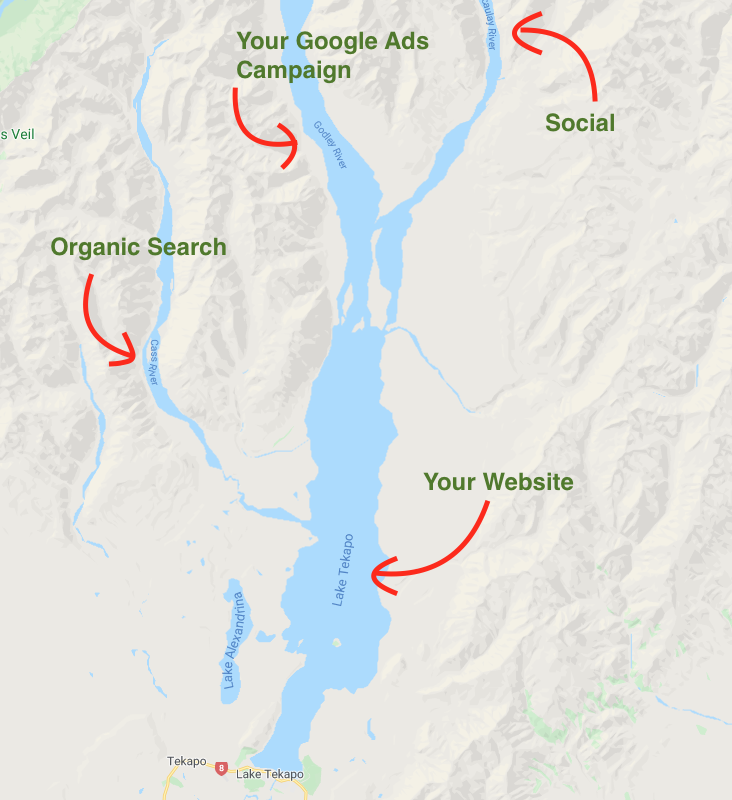SEO Glossary
Bounce Rate
The percentage of people visiting your site and leaving after viewing only one page. It’s calculated by the total number of one-page visits divided by the total number of visits to your website over a given period of time.
If your site rambles, is slow, contains too many irrelevant images or other content elements that add more clutter than value, then you can expect to see your bounce rate go up.
That said SEO, like human behaviour, is seldom an exact science. Your page could be perfectly optimized and still register a high bounce rate from time to time.
My point? Scary jargon-laden statistics like bounce rate should be taken with a grain of salt.
Average Session Duration
The average amount of time a visitor spends on your website, recorded over a 28 day period.
Sessions
Sessions in Google Analytics are defined as the total number of visits to your site — including both new and repeat visits. So that same person who visited your site 100 times on the same device is counted as one user, but 100 sessions.
User
The moment a person lands on any page of your site, they are identified as either a new or returning user.
Acquisition Channel
The means by which your site ‘acquires’ a new user. So, for example, any Google Ads campaigns you run are listed as acquisition channels.
Think of your site as a lake with multiple rivers, or ‘channels’, feeding into it. In this (somewhat tortured) analogy, each river represents a means of accessing the lake (see below).

Impressions
An impression is counted each time your ad is shown on a search result page or on another site on the Google network. Each time your ad appears, it’s counted as an impression.
Clicks
When a user clicks on a link to your site from the search results page.
Site CTR
CTR stands for ‘Click Through Rate’. It’s found by dividing the number of clicks by the number of impressions and provides an idea of how many people are seeing your ad versus how many are clicking through.
For example, say you had 5 clicks last week and 100 impressions – your CTR (5/100) would be 5%.
So what is a good CTR? As with many other key SEO metrics, the answer widely varies by industry. Here’s a table from this blog on WordStream. It contains some handy data that could help you lay down some CTR goals.
| Industry | Average CTR (Search) | Average CTR (GDN) |
| Advocacy | 4.41% | 0.59% |
| Auto | 4.00% | 0.60% |
| B2B | 2.41% | 0.46% |
| Consumer Services | 2.41% | 0.51% |
| Dating & Personals | 6.05% | 0.72% |
| E-Commerce | 2.69% | 0.51% |
| Education | 3.78% | 0.53% |
| Employment Services | 2.42% | 0.59% |
| Finance & Insurance | 2.91% | 0.52% |
| Health & Medical | 3.27% | 0.59% |
| Home Goods | 2.44% | 0.49% |
| Industrial Services | 2.61% | 0.50% |
| Legal | 2.93% | 0.59% |
| Real Estate | 3.71% | 1.08% |
| Technology | 2.09% | 0.39% |
| Travel & Hospitality | 4.68% | 0.47% |
(Irvine, Mark. Wordstream, 2020, URL: https://www.wordstream.com/blog/ws/2016/02/29/google-adwords-industry-benchmarks)

